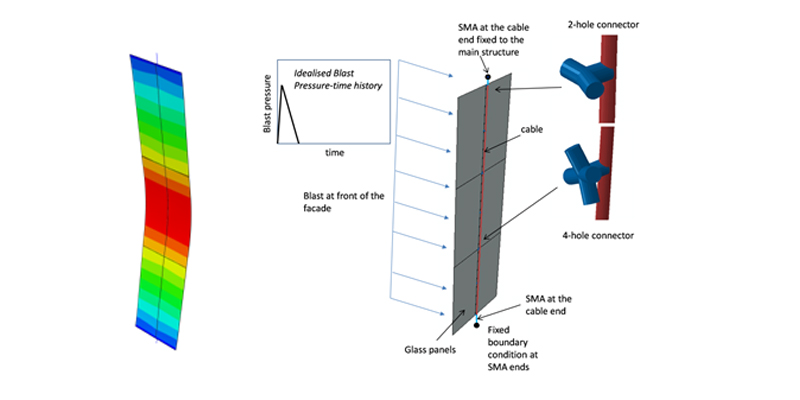Downloads
DOI:
https://doi.org/10.7480/jfde.2021.2.5331Keywords:
Shape memory alloys, glazed façades, cable supported façades, SMA cables, blast resilient designAbstract
Due to an increased level of threat, the design of buildings to resist blast loads has gained importance. The most vulnerable component of the building is typically the cladding system, generally being lightweight and directly facing the hazard with large, exposed surface areas. A large number of cladding materials are available, with architectural intent constantly driving the development of new products and systems. Glazed façades are aesthetically appealing and are popular among architects. In this paper, the use of super-elastic shape memory alloy (SMA) to improve the blast resilience of a cable-supported system is explored. The critical component of these systems is the high strength steel material cable. In the present study it is rendered hybrid (Steel-SMA), by attaching SMA cable(s) to the steel cable at one or both ends, and the dynamic performance under blast is studied. It is shown that the introduction of SMA in the cable has the potential to improve the resilience of the façade system.
How to Cite
Published
Issue
Section
License
Copyright (c) 2021 Shashank Gupta, Euan Stoddart, Andrew Morrison

This work is licensed under a Creative Commons Attribution 4.0 International License.
Authors or their institutions retain copyright to their publications without restrictions.
